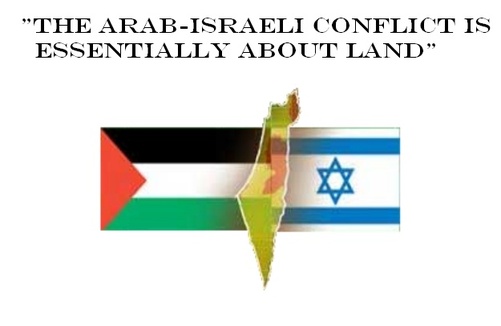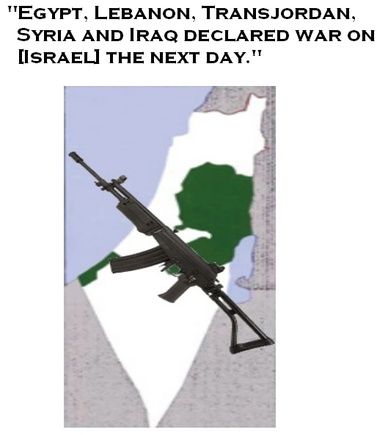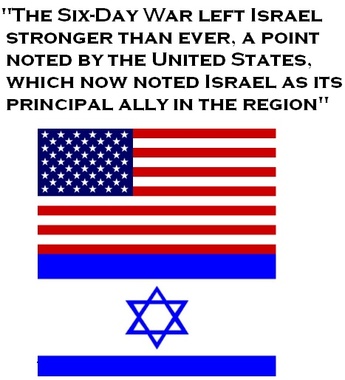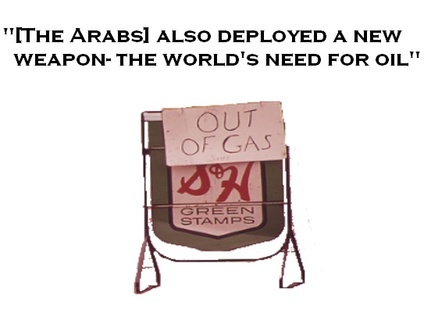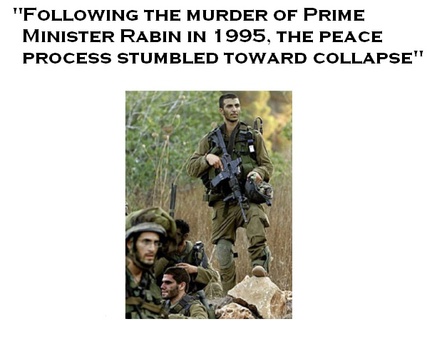(P. 1)This quote is significant to 'The Arab-Israeli Conflict' because it summarizes the entire conflict into one short, easy to understand sentence. It is the first line of the entire book and gets the book rolling. The reader understands the conflict better right from the start and that helps them comprehend the rest of the book. The graphic choosen shows the land of Israel, which is the main battleground for the conflict and has both the Palestinian and Israeli flags on either side of the map.
(P.18) The quote brings the book into a new part of the conflicts history: The War of 1948-1949. It tells of how surronding countries attacked Israel together to reclaim land and how the Palestinian's lost the most. It summarizes the events beginning into a small sentence making it small and digestable. The graphic is Israel and Palestine with a Israeli weapon over it, signifying the war.
(P. 28) After the segment about The Six-Day War the book goes into how Israel's relationship with the U.S. became stronger, and through that its already poor relationship with the surronding lands fell even lower. It helps lead into a major part of the book, Israel's further conflicts and the UN's attempts at creating peace. The graphic is depicting Israel's and the U.S.' stronger bond by having both countries flag's joined together.
(P. 32) This part of the book talks about the effects that the Six-Day War had on the rest of the world. The world's oil supplies went down drastically due to the large amount that the Arab states control. This brings new depth to the Six-Day war, as we see that a conflict so far away can affect us back home. The graphic is a gas station sign with a "Out of Gas" sign on it. It symbolizes the Arab control on oil at the time and how it affected North America.
(P. 46) During the peace talks between Palestine and Israel, a Israeli extremist gunned down the Israeli Prime Minister. This quote opened a new chapter about how the peace talks fell through and how violence rised again. Following it, it tells how suicide bombings occured more often and how Israeli retaliations became harsher. It opened a new chapter of violence. The graphic is of Israeli soldiers to symbolize Israeli retaliation and the continued war.
